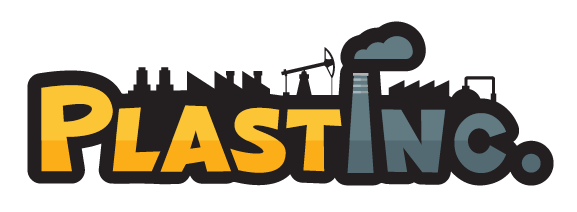Probably we all do agree that the best type of plastic is plastic that is never being made. But we also know that we have to handle the tons of plastic we have already produced. And of course there are plastic products that are very useful and there will always be plastic waste that we can hardly avoid. So we have to take care that as much plastic waste as possible will be recycled.
Distinguish the 7 plastic types
As you might sense already, there is not just „plastic“ – there are many different types of plastic in this world. Unfortunately not all plastics are recyclable or reusable. Learn how to distinguish the 7 plastic types right here – normally there is an chasing arows triangle sign on every plastic product you can buy. If you cannot avoid plastic while shopping, you should at least know if the packagings or the goods themselves are recyclable.
Plastic type #1: PET (Polyethylene Terephthalate)
PET is very common in consumer products, more precisely in soft drink bottles, mineral water, fruit juice containers or cooking oil and many more. Polyethylene terephthalate products are not designed for re-use because it’s difficult to decontaminate PET bottles. So most oft he drinks we buy in plastic bottles are crashed and shredded and then turned into new bottles. Another way of recycling PET is making polyester fibre out of it which are used for carpets, fleece garments or stuffing for pillows. In Germany, for example, there is a container-deposit legislation and so over 93 percent of all PET bottles are recycled – whereas the rate in America is only 25 percent.

Plastic type #2: HDPE (High-Density Polyethylene)
Milk jugs, cleaning agents, laundry detergents, shampoo bottles, shower soaps, some plastic bags and also toys, waste bins, park benches and picnic tables are examples for products made of HDPE. This stiff and hard-wearing type of plastic is reusable and recylable – well, in theory. Only about 35% percent of High-Density Polyethylene used in the US gets recycled.

Plastic type #3: PVC (Polyvinyl Chloride)
Being soft and flexible, PVC is used for food packaging, blister packaging, toys, computer cables, garden hoses, window frames or parts for plumbing. PVC contains several toxins and most of the products made of it require new material for their construction. Polyvinyl Chloride products can be repurposed, but are hardly recyclable (less than 1 percent of PVC is recycled).

Plastic type #4: LDPE (Low-Density Polyethylene)
If you use plastic grocery bags, squeezable bottles, cling wrap, some types of furniture and clothing, chances are high you have LDPE (Low-Density Polyethylene) in your hands. Although LDPE is a less toxic type of plastic, LDPE products are not commonly recycled. They can be repurposed to make e.g. garbage cans or lumber. Check with your local collection service if LDPE plastic is recyclable in your municipality.

Plastic type #5: PP (Polypropylene)
Polypropylene is commonly used for straws, CDs and DVDs, baby bottles, diapers, cereal packaging, yogurt containers, potato chip bags and packing tape. It is tough and lightweight and can easily deal with moisture, grease and chemicals. When repurposed, ice scrapers, battery cables or brooms can be made of PP.

Plastic type #6: PS (Polystyrene)
Also known as styrofoam, Polystyrene is a very common material for disposable coffee cups, plastic food boxes, plastic cutlery and packing foam. As it breaks easily, Polystyrene should by avoided – it is dispersed all over the environment and chemicals present in polystyrene have been linked with human health and reproductive system dysfunction. PS is not very attractive fort he recycling industry, although it can be used as insulation material.

Plastic type #7: Other plastics (Polycarbonate, Polyctide, Acrylic, Acrylonitrile butadiene, Styrene, Fiberglass, Nylon)
These types of plastic have one critical thing in common: The potential for chemical leaching into food or drink products packaged in polycarbonate containers made using BPA (Bisphenol A). Baby bottles, reusable bottles, medical storage containers, car parts and eyeglasses are made out of the so-called „number 7 plastics“. Many BPA products fall into this category, which means it’s best to avoid this plastic for food products. As it is difficult to break down these plastic, these plastics are nearly impossible to recycle.




